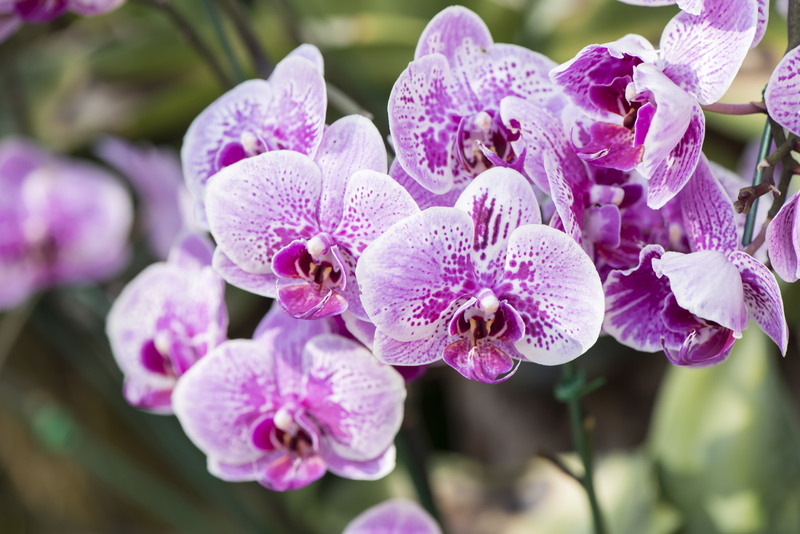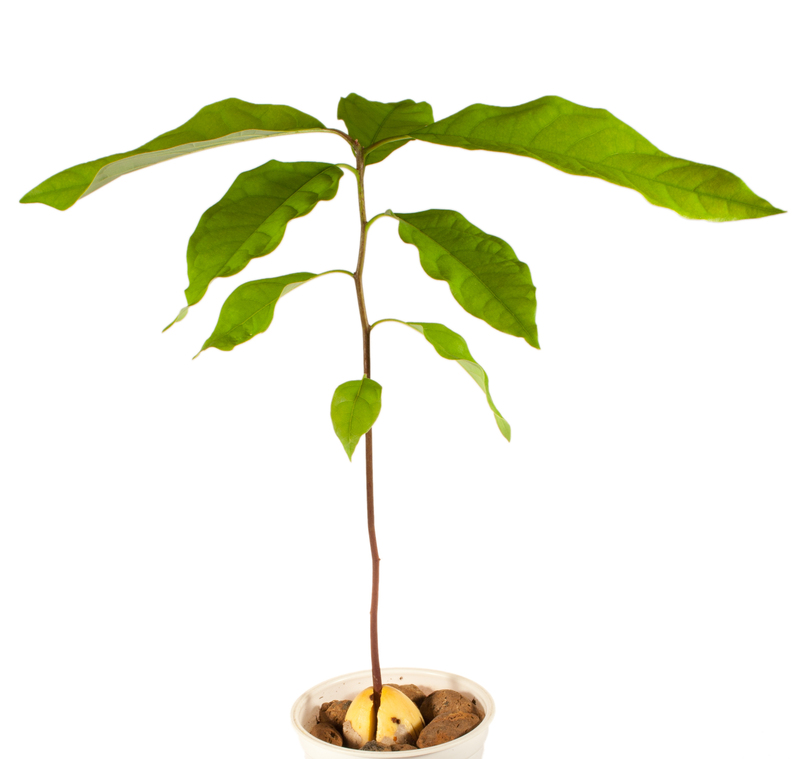Mastering the Art of Orchid Care
Posted on 26/08/2025
Mastering the Art of Orchid Care: A Comprehensive Guide
Orchids are among the most beloved houseplants due to their stunning blooms and sophisticated appearance. Despite their reputation for being finicky, mastering the art of orchid care is both attainable and immensely rewarding. In this guide, you'll discover everything you need to know to help your orchid plants thrive--from choosing the right variety to understanding their unique needs and troubleshooting common problems.
Understanding Orchids: An Introduction
With over 25,000 species and more than 100,000 hybrids, orchids (Orchidaceae) are one of the largest and most diverse families in the plant kingdom. Their beauty, variety, and adaptability have captivated plant lovers for centuries. But to fully master orchid care, it's essential to first understand their origins and natural habitats.
Where Do Orchids Come From?
- Orchids are found on every continent except Antarctica.
- Most popular orchid varieties (like Phalaenopsis, Dendrobium, and Cattleya) are native to tropical and subtropical regions.
- Many orchids are epiphytes--meaning they grow on trees and absorb moisture and nutrients from the air.
Understanding the natural environment of orchids is key to replicating appropriate conditions in your home and achieving orchid mastery.

Choosing the Right Orchid for Your Home
Selecting the best orchid for your environment is a foundational step to successful orchid cultivation. Not all orchids have identical needs, so it pays to do your homework.
Popular Orchid Species for Beginners
- Phalaenopsis (Moth Orchid): The easiest to grow and most commonly available, ideal for novice enthusiasts.
- Dendrobium: Charming blooms, tolerates variable light and temperature conditions.
- Cattleya: Known for their large, fragrant flowers.
- Oncidium (Dancing Lady): Likes bright light and regular watering.
When choosing your plant, inspect for healthy leaves (firm, green, and free from spots) and a robust root system for the best orchid gardening experience.
Essential Elements of Successful Orchid Care
To truly master orchid care, you need to understand and address several key factors:
1. Light Requirements
- Most orchids need bright, indirect light.
- Phalaenopsis prefers low to medium light, while Cattleya and Oncidium thrive in brighter conditions.
- Direct sunlight can scorch their leaves. A sheer curtain or east-facing window is ideal.
- Leaves should be light to medium green. Dark green means too little light; yellowish green or red-tinged indicates too much.
2. Temperature & Humidity
- Most commonly grown orchids (like Phalaenopsis) enjoy temperatures around 65-80?F (18-27?C) during the day and slightly cooler at night.
- Nighttime temperature drops are important for triggering blooming.
- Orchids prefer 50-70% humidity. In dry climates, use a humidity tray or humidifier.
- Group plants together to create a microclimate.
3. Watering Techniques
- Overwatering is a common mistake leading to root rot.
- Water thoroughly, allowing water to drain freely.
- Let the potting medium dry out slightly between waterings (generally once a week for most orchids).
- Use tepid, distilled, or rainwater if possible. Avoid softened water, which contains salts.
- Water in the morning to ensure leaves dry by nightfall, preventing fungal diseases.
Tip: Stick your finger about an inch into the potting mix. If it feels dry, it's time to water.
4. Potting Media & Repotting
- Orchids do not grow well in regular potting soil.
- Special orchid mixes (containing bark, moss, perlite, and charcoal) provide good drainage and air flow.
- Repot orchids every 1-2 years, or when mix decomposes or roots outgrow the pot.
- Spring is the best season for repotting.
5. Feeding & Fertilization
- Feed orchids lightly but regularly. Use a balanced, water-soluble orchid fertilizer every 2-4 weeks.
- During active growth (spring and summer), fertilize at half-strength.
- Flush the pot with clean water monthly to remove salt build-up.
- Reduce feeding in fall and winter when most orchids are less active.
Understanding the Orchid Life Cycle
Knowing how orchids grow and bloom will help you adjust your care routine and master the timing of fertilizer, water, and light.
- Active Growth: New leaves, roots, and pseudobulbs form. Increase water and food.
- Pre-Bloom: Many orchids benefit from a short period of slightly cooler temperatures to stimulate flower spikes.
- Bloom: Bright, showy flowers appear. Continue care but avoid repotting until after flowering.
- Rest/Dormancy: Some orchids (especially Dendrobiums and some Oncidiums) need a rest period with reduced water and no fertilizer to rebloom.
Troubleshooting Common Orchid Problems
Even the most experienced growers encounter orchid challenges. Here's how to address the most frequent issues:
Yellowing Leaves
- Too much sunlight scorches leaves, while overwatering leads to rot. Adjust lighting and check moisture levels.
- Some leaf loss is normal--old leaves drop from the base as new growth appears.
Root Rot
- Occurs with poor drainage or consistent overwatering.
- Repot in fresh medium, trim off mushy roots, and allow to dry before resuming regular watering.
Failure to Bloom
- Insufficient light or lack of nighttime temperature drop may be to blame.
- Ensure adequate light exposure and expose to slightly cooler overnight conditions in fall.
Pests
- Common orchid pests include mealybugs, scale, and aphids.
- Isolate infested plants and treat with insecticidal soap or neem oil.
- Regularly inspect the underside of leaves and leaf axils.
Dealing With Bud Blast
- Bud blast refers to unopened buds turning yellow or brown and dropping before flowering.
- Caused by sudden changes in temperature, drafts, or inconsistent watering.
Advanced Orchid Care Tips
Once you've grasped the basics, take your orchid care skills to the next level:
Creating an Orchid-Friendly Environment
- Use a humidity tray--a shallow dish filled with pebbles and water beneath the orchid's pot.
- Consider a small fan for gentle air circulation, which orchids love (avoid direct drafts).
- Mist leaves occasionally, but avoid the blooms to prevent spots and fungus.
Propagating Orchids
- Many orchids can be propagated by dividing mature plants or by rescuing keikis (baby plants that sometimes sprout along flower spikes).
- Dendrobiums and some Phalaenopsis often produce keikis under the right conditions.
- Use sterilized tools and allow cut surfaces to dry before potting.
Seasonal Care Adjustments
- Spring/Summer: Increase watering and feeding; provide shading during hottest months.
- Autumn: Reduce watering as days shorten; some types need a rest with cooler temperatures.
- Winter: Maintain humidity; avoid letting plants sit in cold drafts or dampness.
Orchid Care Frequently Asked Questions
1. How long do orchid blooms last?
Orchid blooms can last anywhere from several weeks to months, depending on the species and environment. For instance, Phalaenopsis blooms may persist for three months or more with optimal care.
2. Should I cut the flower spike after blooming?
On Phalaenopsis orchids, if the spike remains green after bloom drop, you can cut it back to a node (small bump) to encourage a new branch. If brown and dry, trim it to the base.
3. Why are my orchid's roots growing above the pot?
These are aerial roots, and they are normal for epiphytic orchids. Do not bury them--they absorb moisture from the air. Mist occasionally or leave exposed to enjoy your plant's unique growth habit.
4. Can I grow orchids outdoors?
Many orchid species can spend summer outdoors in temperate climates, provided they're protected from direct midday sun and sudden cold. Always bring indoors before temperatures drop below 50?F (10?C).

The Joy of Orchids: Flourishing With Confidence
With the right knowledge and a bit of practice, caring for orchids can be an endlessly satisfying hobby. Remember, successful orchid keeping isn't about following rigid rules--it's about observation, patience, and responding to your plant's signals.
- Choose a forgiving beginner type and start simple.
- Gradually experiment with different species as your confidence grows.
- Keep a journal or take notes to track watering, blooming, and changes in each plant.
- Join local orchid societies or online forums to exchange tips and experiences.
Conclusion: Your Path to Orchid Mastery
Mastering the art of orchid care is a journey that brings beauty to your home and a unique connection to the natural world. By understanding the fundamentals, embracing new techniques, and tuning in to your orchid's needs, you will unlock the true elegance and longevity of these spectacular plants.
From the thrill of the first bloom to the annual anticipation of color and fragrance, caring for an orchid is one of the most rewarding plant experiences you can pursue. So start today, observe closely, and soon you'll enjoy the lush growth and stunning blossoms that only a well-cared-for orchid can deliver.
For more in-depth guides and tips on mastering orchid cultivation, stay tuned to our site for ongoing orchid care resources, troubleshooting advice, and expert secrets!

